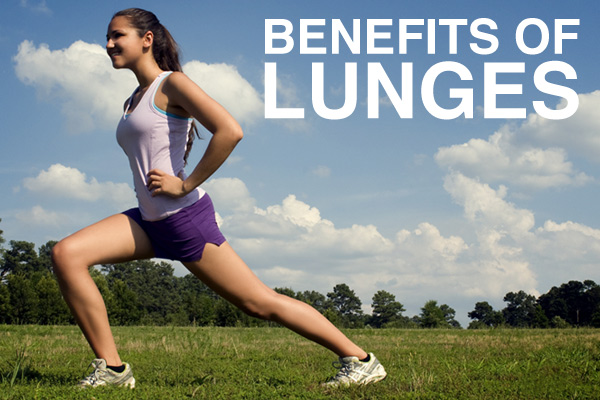
Lunge can refer to any position of the human body where one leg is positioned forward with knee bent and foot flat on the ground while the other leg is positioned behind. It is one of the important exercises for strengthening, sculpting, and building several muscles/muscle groups, including the quadriceps (or thighs), the gluteus maximus or buttocks), as well as hamstrings.
To do lunges properly, keep your upper body straight, with your shoulder back and relaxed and chin up. Step forward with one leg, lowering your hips until both knees are bent at about a 90-degree angle. Make sure your front knee is directly above your ankle, not pushed out too far, and make sure your other knee doesn’t touch the floor.
This functional, multi-joint exercise also can be modified to meet your fitness level. Here are the benefits of lunges:
It’s a versatile exercise
A big benefit that comes along with doing lunges is that they can be done in a number ways and are ideal for all fitness levels. If you just begin to do lunges, you can do basic lunge moves and you don’t have to do too many of them. If you are already quite fit and very physically active you can hold some weights or dumbbells while you do the lunges to add an increased degree of difficulty. It also can be done anywhere and at any time.
Strengthen your backside
According to the American Council on Exercise, lunges are one of the most effective lower-body exercises. Lunges activate the glutes, isolating these muscles and working them better than almost any other exercise. Lunges also reduce fat in the rear and build the muscles on it, giving you the toned, perfect looked backside.
Increases hip flexor flexibility
The lunge techniques force you to stretch your hip flexor muscles, which are chronically tight for many people. When you do a lunge, you basically force your hip flexor to stretch. When you place your back knee on the floor and slightly lean forward from your hips, you can really get a nice hip stretch.
Improve core strength
When doing lunges, you must engage your core muscles, including your bag and abdominals, to keep your body upright and balanced as you move your hips up and down. Neglecting to do this results in poor form and can trigger injuries. Having a strong core is essential because it eases daily activities, relieves lower back pain and improves your balance, posture, stability and athletic performance.
Leg strength
Basic lunges take advantage of your body weight to strengthen the leg muscles, especially the quadriceps of your front thigh. The hamstrings (located in your posterior thigh) and the gastrocnemius and soleus of the calf are also worked when you perform lunges. The forward leg does most of the work during a forward lunge, which is why it is important to alternate legs while performing this exercise.
Improve coordination
Lunges are good to increase your muscular coordinator. Lunges involve using several muscle groups at once, mainly one leg to lunge, the other leg to balance, and your core and back to keep you upright. In other words, lunge involves several muscles in unison—all of which have to work in perfect harmony to successfully execute the exercise at hand.




